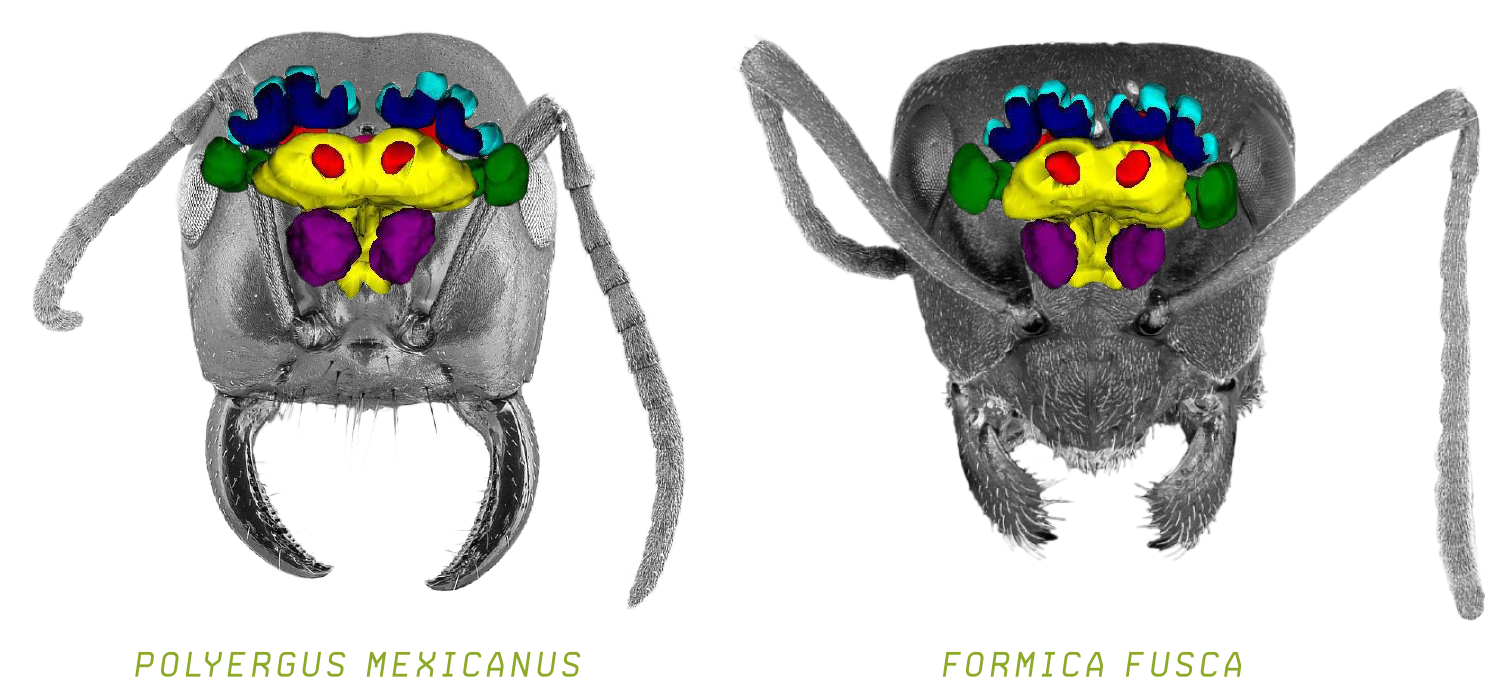
_Sean O'Donnell
O’Donnell is a professor in the Department of Biodiversity, Earth and Environmental Science in the College of Arts and Sciences.
Sean O’donnell has been conducting research on brain evolution and brain investment in social insects for several years. It’s a branch of research that can inspire a better understanding of the factors that shaped human brain evolution.
For this research, he worked with Formica fusca ant workers, or common black ants, that had been forced into a life of hard labor by the slave-making Polyergus mexicanus ant workers. P. mexicanus ants perform little labor for their colonies; instead they serve as the colony’s thugs, invading host colonies and enslaving F. fusca workers to carry out tasks such as foraging, excavating nests and tending the brood.
O’Donnell wanted to find out if P. mexicanus’ dependence on its slaves caused a decrease in brain investment over time. Existing literature didn’t address brain reduction, or its occurrence in social parasites.

Ants’ mandibles are their tool kits, and the differences in this image illustrate the dramatic behavioral specialization of the slavemaker workers. Like most ants, the F. fusca (slave) worker has shovel-shaped mandibles, good for carrying food, digging and other jobs. The P. mexicanus (slavemaker) worker has sharp, ice tong-like mandibles, specialized for use as weapons when raiding F. fusca nests. Researchers has revealed corresponding differences in their brains.
“We thought using social insects would be a cool way to test these ideas since parasitism, including social parasitism, is one context where brain tissues could actually evolve to be smaller rather than larger,” O’Donnell explains.
That’s exactly what he found after he and his team collected and analyzed neuroanatomical data from several dozen P. mexicanus and F. fusca workers. In both species, they focused particularly on the mushroom body calyx, which is like the cerebrum in humans and other mammals.
“F. fusca workers invested about 15 percent more in the mushroom body calyx (relative to the rest of the brain) than P. mexicanus slave-makers,” O’Donnell states in a paper recently published in the Biological Journal of the Linnean Society and written with Drexel students and a colleague from the University of California-Santa Cruz.
Because brain tissue is energetically expensive, this could provide a big savings to the slave-maker workers.
But don’t underestimate the slave-maker ants, O’Donnell advises.
“We don’t automatically expect parasites to be ‘stupid’ — in order to be a successful parasite, you need to be very, very smart in certain specialized ways,” he says. “Slave-makers are as smart as they need to be, because their hosts are doing most of the work for them.”